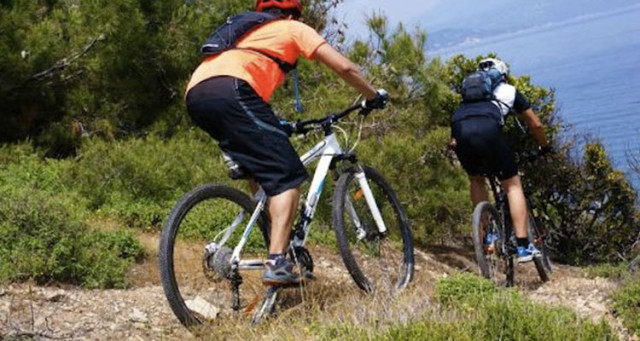Those who approach for the first time in the world of mountain bike (MTB), or mountain biking, and is preparing to … study hard to understand what kind of bike should buy, is likely to run aground in front of the first hurdle: the variety of different types of mountain bikes in circulation.
The differences between the various categories of mountain bike are substantial and are related to the type of activity that the prevailing passionate when it intends to practice riding MTB.
To better understand how to navigate, let’s see quickly. What are the various categories and which are particularly suitable for use. Please note that there is a perfect solution for all your needs: the ideal bike for downhill rides may not be the same as that used for alternating stretches along the plains and a few up and down demanding. Every athletic action on the bike geometries and requires precise solutions, suited to the dynamic requests to the medium for the specific commitment.
Not depreciated or amortized?
A first general distinction can be done by observing the solutions adopted to cushion the MTB. The presence of damping is perhaps more than any other element that characterizes this type of bike compared to road bikes. If road bikes are designed to run fast on homogeneous surfaces, mountain bikes have to give the ultimate in very critical conditions, by a simple flat dirt road in a descent along a stony tremendous, and they generally need a good cushioning. Let us briefly discuss the various options available :
- Shock front only is amortized only the front fork. The technical terms used to indicate this type of bike are front suspended (or front suspension) or hardtail.
- Cushioning front and rear. At the front suspension, fork adds a cushioning system of the frame. The bike of this type are defined full suspension (or full suspension), softail, full suspension.
- MTB Rigid : MTB has no suspension.
And now let us see what are the different types of mountain bikes, each suitable for different applications and locations. Choosing the right bike must be based on the type of use that you think of wanting to do.
The most common types of MTB
There are five main groups of MTB, divided on the basis of the predominant type of routes that are destined to face the best. Within each category, there are also other differences, according to the types and settings of the various components used, disc brake pedals, from the forks to the rear shocks, the characteristics of the change to the overall weight of the bike.
- MTB trail – I’m a bike designed and built for longer routes than the second category of this list, XC, and offer the enthusiast increased comfort. Also suitable to tackle long distances on paved roads or dirt roads are not binding. The MTB trail geometries are designed with the most relaxing and usually have double cushioning and ability to lock fork and suspension, to promote pedaling efficiency and reduce the oscillations. They are generally heavier than XC, and are particularly suitable for those who plan to go on long hikes in contact with nature, perhaps in the company of other enthusiasts.
- MTB XC (cross-country) and Marathon – They are designed for MTB competitions in cross-country and marathon. These paths of mixed type, with flat sections, uphill, downhill, on a dirt road, but also paved. The paths are longer than the marathon cross-country. For this type of ” rides ” are chosen rather reactive bike with lightweight frames and clipless pedals. In general, in the MTB XC and marathon, you favor lightness and speed with respect to robustness and efficiency downhill.
- MTB All-mountain or Enduro – Bike paths also intended to harsher than the previous two categories, they have a decent yield in the road segments. Despite many variations in the type, MTB are versatile, can be used both for long stretches down both paths in the mountains, but also for long rides on trails easier. Generally mounted hydraulic disc brakes and full suspension.
- MTB Freeride – Suitable for those who like the changes and want to try some more thrill. Constructed with a view to greater strength, usually with full suspension and disc brakes large, longer point on the driveability that the convenience of those who are in the saddle.
- MTB Downhill – very durable bike, the downhill or DH are only used for descending slopes and favor robustness and stability. They are not suitable to drive up or plain nor too short climbs.
These categories include most of the MTB in use today, with the exception of some very special bike, such as the street or dirt, designed for the most acrobatic activity.
Which MTB to choose?
The mountain bike enthusiast will have a clear idea about the type of bike that best suits their needs, while those who start will hardly be sure of hitting 100% purchase. Certainly, it is good to try to understand what are the paths you prefer to deal with, and yet it may be that after the first releases are characterized by quiet and long rides in the hills, there is enthusiasm for the craziest descents, then you will have to abandon their XC and buy a more suitable.
After having reasoned on the bike more suitable, having consulted the information available online and have listened to the advice of the experts, maybe you should not invest huge sums for the first MTB, which might not be ideal for the uses to which they want to do.











